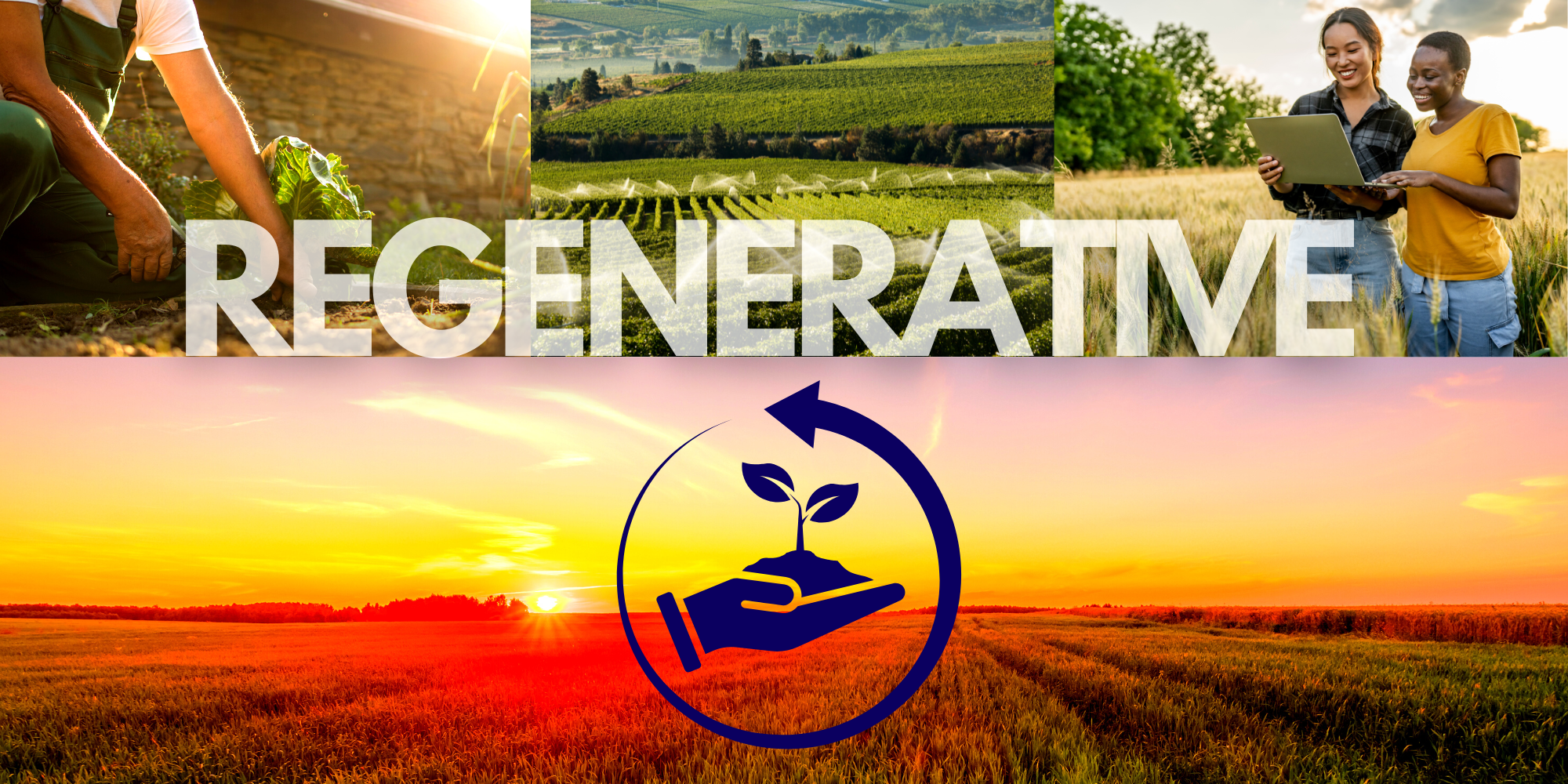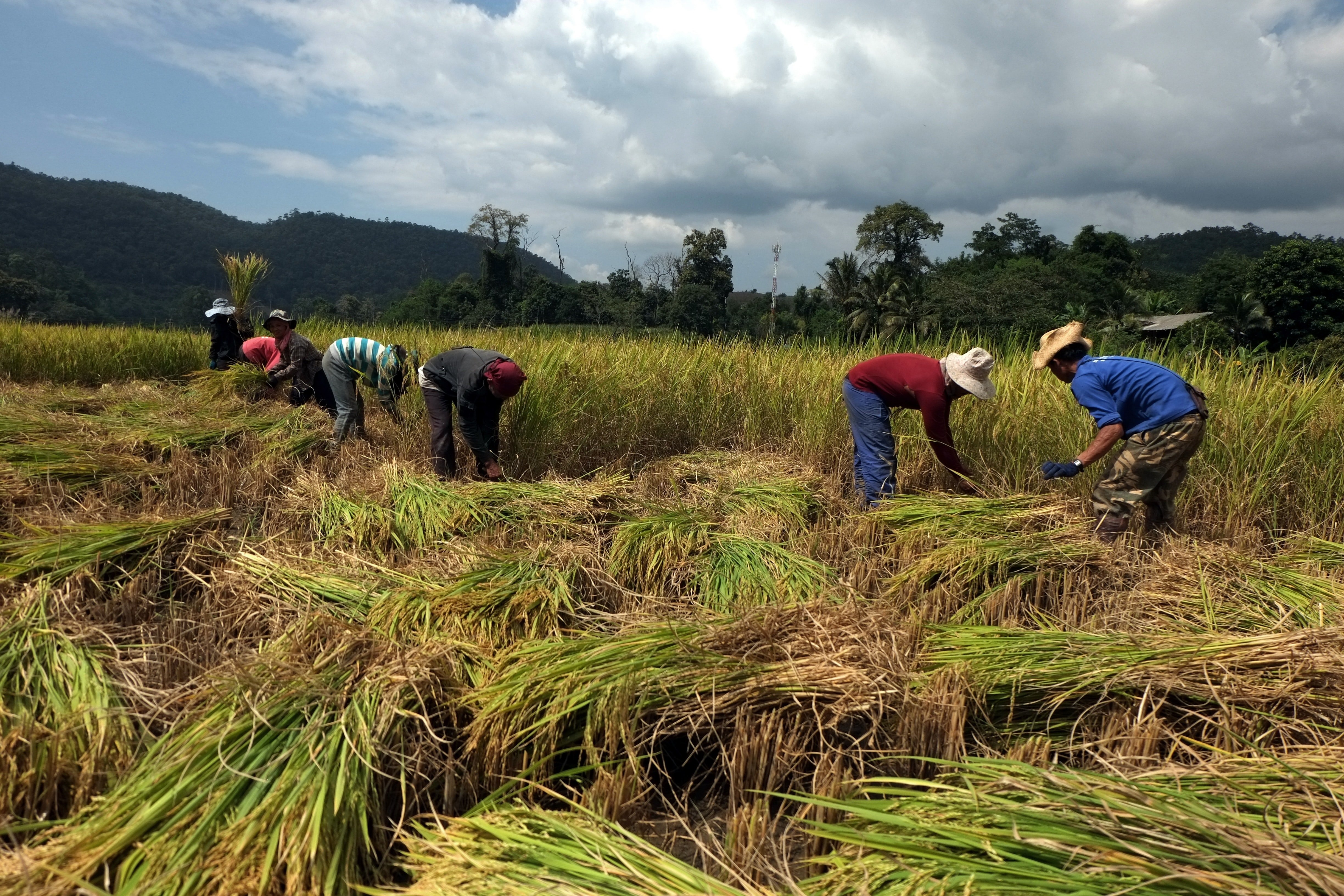The global food system connects our environment, society, and economy. Yet, around the world, public and private sector experts have warned that it’s unsustainable.
Just last month, the United Nations convened the UN Food Systems Summit +2 Stocktaking Moment in Rome, Italy in concert with the Food and Agriculture Organization of the United Nations (FAO). This forum was held to build on the momentum of the inaugural Food Systems Summit two years prior. Its purpose was to create a conducive space for countries to review progress on the commitments to action, successes, and emergent priorities in closing the implementation gap for food systems transformation detailed in a collective 2030 Agenda.
Despite much voluntarily reported progress, the reality that hunger, food insecurity, and child malnutrition threaten the lives, livelihoods, and health of hundreds of millions of people persists – both now and in the future. The challenges faced by our food systems are not easily overcome:
- Rural poverty is persistent and widespread
- 258 million people are facing acute insecurity
- 45 million children are suffering wasting, and
- 670 million are people facing hunger in 2030, the same proportion as in 2015.
"We might not be winning the game at half time, but the final outcome is still within our control, and this can be a winning team. But there is no time to lose and as we have discussed in this gathering, we need acceleration. We need breakthroughs on SDG financing and the means of implementation.” - UN Deputy Secretary-General Amina J. Mohammed
Mohammed's advisement includes a dual pathway on the road ahead for radically propelling food system transformations and the engine to drive us collectively forward: funding mechanisms to support investment, particularly for the Global South, and private sector engagement in close partnership to implement innovative and even transformative solutions.
From the food crisis to the evolution of sustainable agriculture, we believe the most promising avenue to identify and scale solutions lies in building powerful cross-sector partnerships between the public and private sectors. Although these pursuits often intersect, it is the latter we discuss with more depth in these published Insights.
Why We Need Cross-Sector Partnerships for Food Security and Sustainable Agriculture
When we think about our global food system, the grand challenge is that we need innovative solutions to unique localized challenges, scaled immediately, that, together, transform a system. No company can achieve this on its own—nor can USAID.
Only through collaboration between the private sector, civil society, local actors, and global development organizations such as USAID can we develop and implement integrated solutions with the power to create transformational global change.
The good news: greater public and private collaboration is already underway.
Through its Bureau for Resilience and Food Security (RFS), USAID works with a host of partners to advance inclusive agriculture-led growth, resilience, nutrition, and water security, sanitation and hygiene in priority countries to help them accelerate and protect development progress. In the US, this includes role initiatives like Feed the Future initiative to achieve the goals of the U.S. Government Global Food Security Strategy to reduce hunger, poverty and malnutrition.
These initiatives demonstrate how USAID has prioritized partnering with companies to advance agriculture and food security goals.
Meanwhile, forward-looking companies across industries are advancing initiatives to reduce food waste and climate impacts, keep more food products and materials in use, and produce food in ways that regenerate nature—thereby forging more resilient and sustainable supply chains.

4 Areas for Cross-Sector Partnerships with USAID on Food Security and Sustainable Agriculture
Drawing on our experience designing and implementing cross-sector partnerships, we’ve outlined four priority areas with significant opportunities for the private sector to partner with USAID on food security and sustainable agriculture.
Across these priority areas, there are many variations and forms individual partnerships might take, depending on geography, the objectives, and the company. So, for each, we focus instead on highlighting key illustrative roles that a company might play in a potential partnership with USAID.
At the end of the piece, we also explore the key-value USAID brings to the table.
1. Sustainable Aquaculture and Seafood Supply Chains
New research has found that aquatic foods have a vital role to play in food security and a sustainable food future. Aquaculture operations and small-scale fisheries provide a critical source of protein and livelihoods. They also have significant impacts and implications for both biodiversity and climate.
Today’s major seafood buyers—including institutional food services, restaurant chains, and retailers—have a keen awareness that their customers want their seafood sustainably sourced. The private and public sectors have many opportunities to collaborate on co-designing, piloting, and scaling solutions that would advance the sustainability of aquaculture operations and seafood supply chains.
Potential Private Sector Roles in a USAID Partnership on Sustainable Aquaculture and Seafood Supply Chains
Here are a few key illustrative roles that a company might play in a potential partnership with USAID to advance sustainable aquaculture operations and seafood supply chains.
Engaged, Long-Term Buyer - Seafood buyers can enter into long-term commitments and contracts to buy from aquaculture farmers and small-scale fishers who deploy and invest in sustainable practices. Small-scale fishers and aquaculture farmers often incur added costs when transitioning to sustainable management practices; costs that often create a barrier to entry. When the private sector commits to longer-term contracts, there can be greater stability and assurance to fishers that the added costs of sustainability investments will be worth it. Such contracts also open up opportunities for fishers and aquaculture farmers to access affordable finance to support sustainability investments.
Standards Leader - For seafood supply chains to become more sustainable, forward-thinking seafood buyers need to change their procurement guidelines to reflect a higher standard—and then they need to work with their suppliers to put new policies into practice. Updated guidelines should reflect environmental sustainability, social responsibility, and climate impacts across a product’s life cycle. And by making such commitments public—and then reporting publicly on progress—companies can help to push their industry toward more systemic change.
Investor and Tester of Innovation - The private sector can co-finance and pilot new responsible and sustainable innovations in their supply chains, such as novel and nature-friendly fish feed ingredients, digital and IoT on-farm (or vessel) data platforms, and worker voice and empowerment tools.
Pioneer for Supply Chain Assurance & Traceability - For years, the seafood industry has struggled to verify on-farm sustainability improvements for small farmers and to definitively trace sustainable seafood from catch to plate. Here, companies can use their own supply chains as a testing ground for innovation, forming cross-sector partnerships to co-create, co-fund, and pilot new models for sustainability verification and assurance and supply chain traceability. Such partnerships can also include other key ecosystem players such as local banks or development finance institutions to foster innovative financing mechanisms that help incentivize and reward sustainability improvements and outcomes.
2. Regenerative Agriculture
As the private sector seeks new pathways to combat climate change and build more resilient supply chains, and as the Biden administration continues to make climate action a priority, companies are prioritizing regenerative agriculture practices to support their sustainability strategies.
This approach encourages best practices for farming and grazing that mitigate climate change by rebuilding soil organic matter and combatting soil erosion, resulting in a carbon drawdown and improvements to the water cycle, while enhancing the wider ecosystem. Intercropping and other regenerative agriculture practices also create new avenues for farmers to bolster local food security and diversify their income streams.
Today, we see more opportunities emerging for companies to partner with USAID in emerging markets to advance regenerative agriculture goals through farmer-centric approaches . 
Learn Regenerative Agriculture Trends in 2023
Potential Private Sector Roles in a USAID Partnership on Regenerative Agriculture
Here are a few key illustrative roles that a company might play in a potential partnership with USAID to advance regenerative agriculture goals.
Engaged, Long-Term Buyer - When the private sector commits to long-term contracts with farmers utilizing regenerative agriculture practices, it helps ease farmers’ transition by reducing their financial risk. Such contracts can also help incentivize farmers to explore and adopt new sustainable practices (though, here, partners must also explore how best to expand farmers’ access to crucial new information and inputs).
Co-Investor - Like with the aquaculture sector, smallholder farmers struggle to access financing or credit to invest in best practices on their farms. Companies can help overcome this barrier by partnering with USAID, civil society, and social enterprises to bring new techniques, training, or tools to farmers at scale, or by partnering with local banks, development finance institutions, and other financial players to help finance on-farm sustainability improvements.
Technical Expert - Companies can also offer training, on-farm mentorship and support services, and other technical assistance to their supply chain farmers directly, to help them implement new regenerative agriculture practices.
Tools, Equipment, and Input Provider - As the push toward regenerative agriculture intensifies, farmers will need new manufacturing equipment, new seed varietals, and other inputs. Companies can help forge new supply chain partnerships—with the help of conveners like USAID—to help farmers affordably and reliably access critical inputs for sustainable agriculture.
3. Digital Innovation for Smallholder Farmers
Whether for aquaculture or regenerative agriculture practices, smallholder farmers need ready access to practical and user-friendly information. Through digital tools, farmers can access data on markets, financing, agronomics (e.g., best practices for planting), weather, and climate. New digital tools are also helping farmers forge connections to buyers and markets, compare and purchase key farming inputs, and gain access to critical financial services that were once out of reach.
By collaborating with USAID, the private sector can help to design, fund, test, and scale new digital tools that support smallholder farmers as they work to advance agricultural productivity and sustainability. Importantly, however, partners must also consider how a shift to digital approaches might introduce new barriers to access for women or other groups. Digital solutions need to be as inclusive as possible in their audience, design, and execution—as well as in the metrics that measure their success.
Potential Private Sector Roles in a USAID Partnership on Digital Innovation for Smallholder Farmers
Here are a few key illustrative roles that a company might play in a potential partnership with USAID to accelerate digital innovation for smallholder farmers.
Co-Investor/Co-Designer - One-size-fits-all approaches rarely work in agriculture. Even for digital tools, locally contextualized solutions should be co-created with farmers’ input to increase their adoption of new technologies and practices, or to seek out new information. Companies can work with local innovators to co-fund, adapt—and, in some cases, co-design—new tools, tailored to the needs and practices of farmers in key geographies.
Content Advisor - Companies may create and offer educational content designed to help farmers deploy new tools or best practices for sustainable farming, on-farm productivity, or market access.
Supply Chain Pioneer - Companies can pilot and scale new digital tools with farmers in their supply chains.
Technology Provider - Digital solutions are worthless if farmers cannot access them, so technology companies and mobile operators are needed to build out broadband and digital connectivity infrastructure in rural areas. Companies can also play a role in designing the apps and digital platforms that farmers will access, and the private sector has a role in building the hardware—mobile devices, tablets, and computers—farmers need.
4. Building the Business Case for Women’s Economic Empowerment (WEE) in Agriculture
Women make enormous contributions to economies, whether in businesses, on farms, as entrepreneurs or employees, or by doing unpaid care work at home that help contribute to increasing food security for their families and in their local communities. From ESG initiatives and roadmaps to supporting UN SDGs, companies have many incentives to support Women’s Economic Empowerment (WEE) across their supply chains to transform the food system.
We have written in other Insights about some of many potential focus areas in which investment in WEE can make an impact. This includes the promotion of safety, inclusiveness in the digital economy, investing in women’s entrepreneurship and SMEs, advancing women’s access to safe Water, Sanitation, and Hygiene (WASH), empowering women farmers in supply chains, and supporting women’s access to secure land tenure. Each of these six areas have direct links to food system transformations.
Potential Private Sector Roles in a USAID Partnership on Women’s Economic Empowerment
Here are a few key illustrative roles that a company might play in a potential partnership with USAID to support WEE and contribute to reducing hunger and child malnutrition, and address food insecurity,
Co-Investor in Local Championing Organizations – Companies can through partnerships support the work of existing organizations that are already making strides in support of inclusive involvement of women in local communities around the globe. Whether it be supporting local efforts to increase women’s safety as a requisite to participation in the local economy, to investing in partnership with organizations that work with SMEs, particularly women owned, the private sector can help improve food systems access, safety compliance, information-sharing, and nutritional improvement.
Co-Investor/Co-Designer of WEE Interventions – Partnering with USAID can provide companies with opportunities to strengthen WEE along agricultural supply chains through the development, testing, and refinement of innovative activities and strategies around the introduction and training of new on-farm approaches and technology, business training, market access and expansion support, and logistics and distribution capacity building, as well as other interventions. Our involvement in implementing the USAID-PepsiCo GDA, is an example of how WEE in global supply chains can benefit multiple stakeholders, including the private sector.
Technology Investor – Companies focused on technology innovation related to food supply and security transformations can forge cross-sector partnerships that deliver solutions that drive on-farm productivity, efficiency, resiliency, and expansion.
Key USAID Partnership Roles for Sustainable Agriculture in Emerging Markets
When companies think about why they’d partner with USAID, they might first think about money (or co-funding). And while USAID certainly can co-invest as a partner, it can also offer significant—even, in some cases, greater—value by playing other critical roles.
Here are a few key roles USAID can play as part of a cross-sector partnership initiative.
Convenor - USAID is often well-connected with major ecosystem players and has relationships with key organizations regionally and in priority countries. By partnering with USAID, companies can better connect with necessary players, including local government agencies, other companies, civil society, social enterprises, or local farmers’ groups who can help scale a project or initiative.
Technical Assistance Provider - USAID is well equipped to provide technical assistance and expertise tailored to the needs of smallholder farmers. For this, USAID also taps its extensive networks of local partners and implementing partners (who bring extensive sector and geographical expertise).
Co-Investor and Risk Mitigator - USAID can help the private sector co-invest in agricultural transformation and sustainable supply chains. Further, USAID often deploys its funding and other financial tools strategically to help draw down the risk companies face in piloting and implementing new innovative solutions. This can help shift the risk equation for the private sector and the farmers in their supply chains.
Credibility Booster - USAID brings a powerful global brand, which can lend credibility to partnership initiatives and help to spur buy-in from local and global ecosystem partners.
Advocate - For some partnerships, success hinges on changing industry practices, shifting local policy, or getting a whole host of diverse actors to embrace a new way forward. Here, USAID can lend a powerful voice, working with private sector partners to advocate for and drive change.
Let’s Partner for a Sustainable Food System
Here’s what we think: The secret to advancing a more sustainable, equitable food system lies in developing strategic partnerships between the private sector and global development players like USAID.
Each plays different yet complementary roles; together, they can more effectively achieve their individual business, sustainability, and impact goals, while simultaneously driving progress on other key issues such as combatting poverty, advancing gender equality, and protecting our climate and environment.
Private sector and USAID changemakers should consult a partnership development expert to discuss implementing a cross-sector partnership to accelerate sustainable food system goals.
Editor’s Note: This post was originally published on September 29, 2021, and has been updated for accuracy and current best practices.




